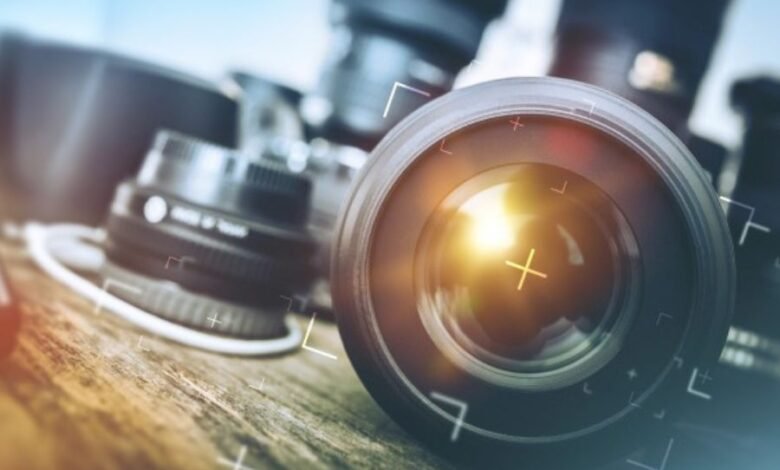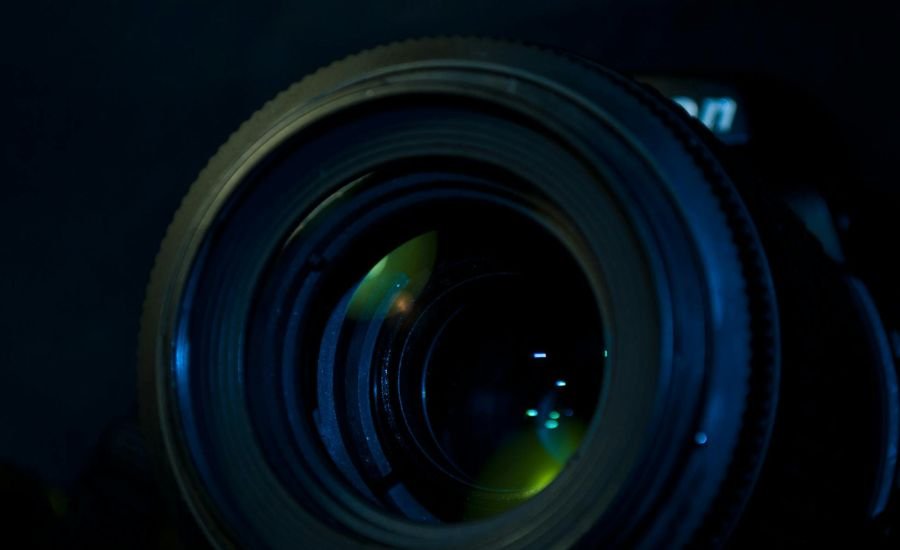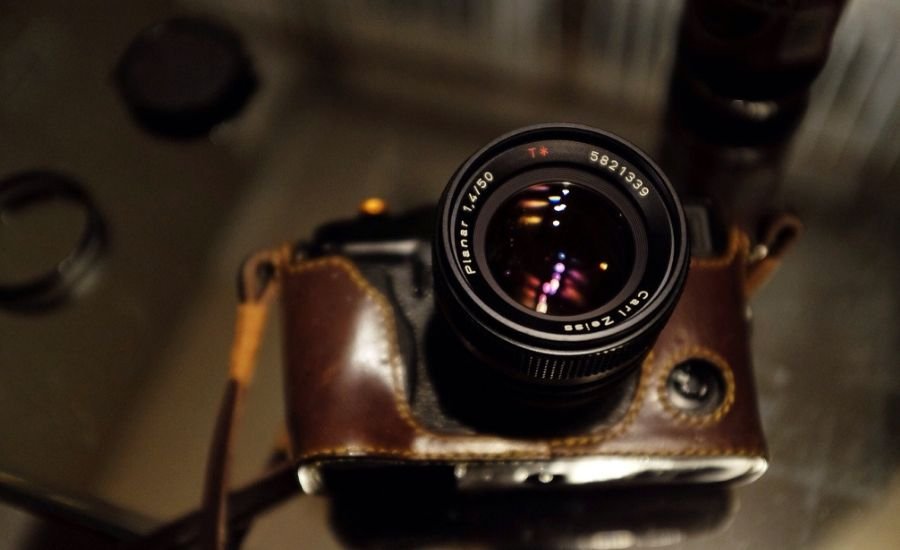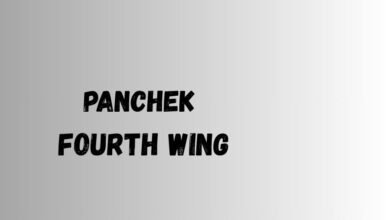
Lens flare, a captivating visual phenomenon, has evolved from being considered an accidental flaw in photography and cinematography to an artistic tool with immense creative potential. The term “Photeeq Lens Flare” refers to the intentional use of this optical effect to enhance the mood, emotion, and overall aesthetic of images or films. In this comprehensive guide, we will explore how Photeeq lens flare occurs, how you can use it creatively, and how it can be a game-changer in your visual storytelling.
While some may still perceive lens flare as an unwanted distraction, many photographers and filmmakers now intentionally embrace it to add a unique flair to their work. This article will cover the origins, science, artistic uses, and challenges associated with Photeeq lens flare, along with tips to master its creation.
What is Photeeq Lens Flare?
Lens flare occurs when bright light sources, such as the sun, streetlights, or artificial lights, interact with the camera lens. When this light enters the lens at certain angles, it can scatter, reflect, and create halos, streaks, or circles in the image. These light artifacts are often referred to as lens flare, and Photeeq lens flare represents a refined version of this phenomenon used artistically.
While lens flare used to be seen as a flaw in photography, it has since been embraced by photographers and filmmakers as a tool to evoke specific emotions, create cinematic effects, and enhance the narrative of their work. In simple terms, Photeeq lens flare can add a dreamy, ethereal, or nostalgic effect to a scene, making it visually striking and emotionally engaging.
The Science Behind Photeeq Lens Flare
To fully appreciate and control lens flare, it’s essential to understand the science behind it. Lens flare happens due to the interaction between light and the internal elements of a camera lens. Here’s a basic breakdown of the process:
- Light enters the camera: When a bright light source, like the sun, enters the camera lens, it reflects and scatters within the lens elements.
- Internal reflections: These reflections bounce off the multiple lens elements and the lens coating. The more lens elements there are in a lens, the more reflections can occur.
- Flare patterns: The scattered light creates patterns that show up in the final image. Depending on the lens design and the angle of the light, these patterns can vary from subtle halos to dramatic streaks or circles.
The color, intensity, and shape of the flare depend on various factors, such as the quality of the lens, the aperture used, and the angle at which the light hits the lens. This is why photographers and filmmakers may use different lenses and lighting conditions to achieve specific flare effects.
How to Achieve Photeeq Lens Flare in Photography

Achieving Photeeq lens flare in photography requires a bit of planning and creativity. You can use lens flare intentionally to add mood and depth to your images. Here’s how:
A. Use of Strong Light Sources
The most effective way to create Photeeq lens flare is by shooting directly into a bright light source. Common light sources for flare include:
- The Sun: One of the most popular sources of lens flare, especially during golden hour when the light is soft and warm.
- Streetlights: These can create dramatic flare effects, especially at night.
- Artificial Lighting: Flare can be used to simulate the effect of sunlight when shooting indoors or in controlled environments.
By positioning the light source at an angle to your lens, you can create dynamic flare effects. Be mindful of how much light enters the lens, as too much can overwhelm the image and cause unwanted overexposure.
B. Experiment with Aperture Settings
The aperture of your camera lens plays a significant role in controlling lens flare. Lenses with smaller apertures (higher f-stop numbers) tend to produce starburst-like flares, while larger apertures (lower f-stop numbers) create softer, more diffused flares. By experimenting with different aperture settings, you can achieve the desired intensity and shape of the flare.
C. Positioning Your Lens
The angle at which the light hits your lens is crucial in achieving lens flare. Moving your camera slightly can change the flare’s shape and intensity. Photographers can use the light’s position relative to the lens to create a soft, gentle flare or a more pronounced effect.
Photeeq Lens Flare in Cinematography
Lens flare is a powerful tool in cinematography. Filmmakers use it to enhance the emotional intensity of a scene and add visual drama. When used creatively, Photeeq lens flare can elevate the storytelling by adding texture, mystery, or futuristic qualities to the film.
A. The Cinematic Power of Photeeq Lens Flare
In films, lens flare is often used to intensify emotions. For example:
- Dramatic moments: A flare can enhance a character’s moment of realization, adding to the tension or excitement of the scene.
- Romantic scenes: A soft flare can create a dreamy or nostalgic ambiance, emphasizing the romantic nature of the moment.
- Action scenes: Flare can add to the intensity of action sequences, emphasizing the harshness or energy of the environment.
Photeeq lens flare can also be used to convey a sense of mystery or make the audience feel a sense of awe. By strategically using lens flare, filmmakers can guide the viewer’s emotions and make them feel more connected to the story.
B. Iconic Uses of Photeeq Lens Flare in Film
Several directors have made Photeeq lens flare a signature part of their filmmaking style. Notable filmmakers who have used lens flare to great effect include:
- J.J. Abrams: Known for his use of lens flare in sci-fi films like Star Trek and Star Wars: The Force Awakens, Abrams uses flare to evoke a sense of wonder and to enhance the futuristic themes of his films.
- Steven Spielberg: Spielberg often uses lens flare to add nostalgia or grandeur to a scene, as seen in films like E.T. and Close Encounters of the Third Kind.
These directors use lens flare not just as a visual tool but as a storytelling device. The flare’s emotional impact adds a deeper layer to the story, making the audience feel more immersed in the narrative.
Don’t Miss Out: Bonjixkiz
C. Technical Considerations in Cinematic Lens Flare
Capturing Photeeq lens flare in cinematography requires careful planning and technical expertise. Filmmakers use specific camera lenses, lighting setups, and shooting techniques to control the flare’s intensity and type. Here are some tips:
- Lens choice: Wide-angle lenses are often used to produce more noticeable and pronounced flares. However, telephoto lenses can also create beautiful, subtle flares.
- Lighting position: Adjusting the position of the light source can change the flare’s characteristics. By moving the light, filmmakers can control the shape, color, and intensity of the flare.
- Filters and lens hoods: Using filters can help control flare and reduce unwanted reflections. A lens hood can help block excess light from entering the lens, but it’s essential to position it carefully to maintain the flare effect.
Photeeq Lens Flare in Digital Art and Design
Photeeq lens flare isn’t just limited to photography and cinematography. Graphic designers and digital artists use lens flare effects to enhance visual compositions, create drama, and add realism to their work.
A. Using Photeeq Lens Flare in Graphic Design
Digital artists often add simulated flare effects in software like Photoshop, Illustrator, or After Effects. These tools allow for precise control over the flare’s intensity, color, and position. Here’s how lens flare is used in digital art:
- Creating impact: Flare is often used in advertisements, posters, and album covers to draw attention to focal points or evoke a specific mood.
- Enhancing realism: Artists can use lens flare to mimic natural lighting effects, making digital art feel more grounded in reality.
- Adding drama: Like in photography or cinematography, flare in digital art can add drama and emotional depth, making the composition feel more dynamic and engaging.
Common Challenges with Photeeq Lens Flare
While lens flare can be a powerful creative tool, there are challenges associated with its use. Here are some common problems photographers and filmmakers face:
A. Overexposure
One of the main issues with lens flare is overexposure. When too much light enters the lens, it can wash out parts of the image, losing detail and color. To avoid this, you can use exposure compensation, adjust your aperture, or use a lens hood to minimize unwanted flare.
B. Unwanted Flare
Sometimes, you may get flare that doesn’t add to the image. This unwanted flare can cause distractions or ruin the composition. To minimize unwanted flare, make sure to position your light source carefully and experiment with different angles and camera settings.
C. Controlling Intensity
Achieving the right amount of flare is key. Too much flare can overwhelm the image, while too little may not create the desired effect. By adjusting your lens choice, aperture settings, and light source position, you can achieve the perfect balance.
Tips for Perfecting Photeeq Lens Flare

To master Photeeq lens flare, here are some tips:
- Experiment with different light sources: Shoot at different times of day, use artificial lights, or try shooting through windows to see how light interacts with your lens.
- Use the right lens: Wide-angle lenses often produce the most dramatic flares, but each lens will create different effects. Try out different lenses to see which works best for your style.
- Control your aperture: Adjusting your aperture settings can help you fine-tune the flare’s size and shape. Smaller apertures create starbursts, while wider apertures create softer flares.
- Post-processing: If you want to enhance the flare effect further, you can use editing software to adjust the color, intensity, and position of the flare.
Conclusion
Photeeq lens flare is more than just a visual anomaly; it is a creative tool that can enhance the emotional impact, mood, and aesthetic of your images and films. By understanding how lens flare works and learning to manipulate it, you can add depth and drama to your work, whether you’re a photographer, filmmaker, or graphic designer.
Lens flare adds a unique visual dimension that can transform a simple scene into something extraordinary. By using the tips and techniques outlined in this article, you’ll be able to harness the power of Photeeq lens flare and elevate your visual storytelling to new heights.
FAQs
Q: What is Photeeq Lens Flare?
A: Photeeq lens flare is the intentional use of light reflections and scattering inside a camera lens, creating visual effects like halos or streaks to enhance the mood or aesthetic of an image or film.
Q: How do I create Photeeq Lens Flare in my photos?
A: To create Photeeq lens flare, position your camera toward a bright light source, such as the sun or streetlights. Experiment with different angles, apertures, and lenses to control the flare’s intensity and shape.
Q: Can lens flare be controlled?
A: Yes, lens flare can be controlled by adjusting your camera’s aperture, using a lens hood to block excess light, and positioning your light source at different angles.
Q: Why is lens flare used in filmmaking?
A: Filmmakers use lens flare to add emotional depth, intensity, and atmosphere to scenes. It can evoke feelings of awe, nostalgia, or drama, depending on the context of the film.
Q: Does lens flare always look the same?
A: No, the appearance of lens flare depends on factors like the camera lens, light source, aperture settings, and angle of the shot, which can produce a variety of effects.
Q: Can I remove unwanted lens flare in editing?
A: Yes, unwanted flare can be minimized or removed in post-processing using software like Photoshop or Lightroom by adjusting exposure, contrast, and color.
Q: Is Photeeq lens flare only used in photography?
A: No, Photeeq lens flare is also widely used in filmmaking, digital art, and graphic design to enhance visuals and create dynamic effects.
Read Next: Entertaincraze





